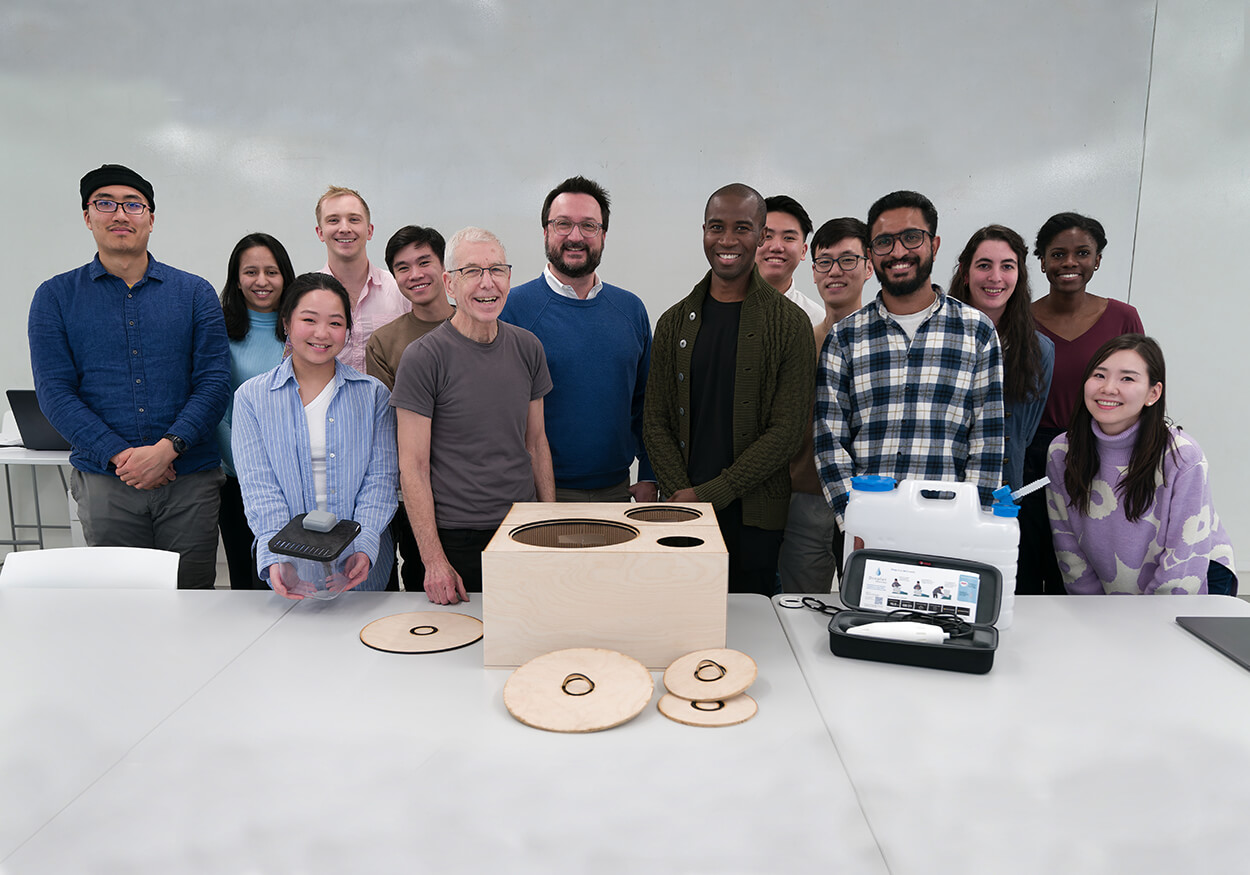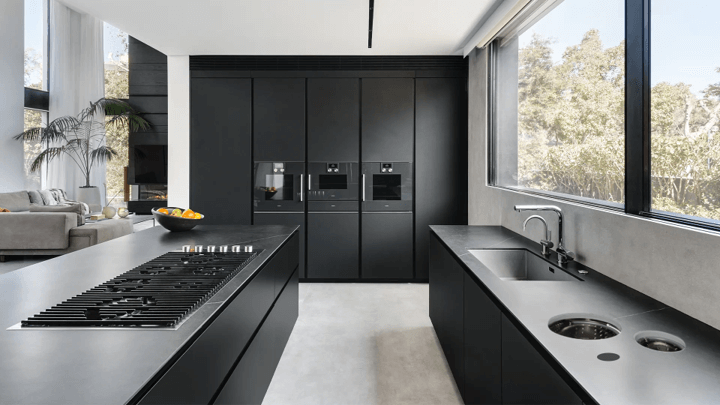Creating Viable Products from a Novel Ozone Water Technology
By Devon McPhee
January 31, 2024

Picture this: a CalTech-trained scientist has developed an innovative technology. He knows it has commercial potential but needs help translating it from the lab to the real world. What does he do next?
Fortunately for researcher Donato Ceres, founder of Chicago-based startup Aquamox, he was introduced to Associate Professor Martin Thaler, who saw the potential to make this a design challenge for ID’s Fall 2023 Product Design Workshop.
The Design Challenge
Three teams of graduate students had the task of taking the innovation—a diamond-based technology that turns regular water into ozone water, a highly effective and ecologically friendly sanitizer—and developing a product with market potential.
But there were constraints on the product possibilities. Federal regulations limit the claims that a business can make about a sanitization technology without having conducted rigorous and expensive testing. Aquamox wanted product ideas for uses already approved by the government, such as non-commercial washing of fruits and vegetables.
Journey Through Prototypes
The students’ 14-week product development process started with primary and secondary research. Students conducted interviews with friends, family, personal chefs, and residential and commercial architects. They explored how and why a consumer would use a product based on this technology, reviewed literature about related products already on the market, and analyzed potential market categories.
From there, the teams brainstormed potential product ideas and worked with the client to evaluate them and identify the most promising one. Each group then took their strongest idea and began to build out its specifications—such as size, cost and materials—testing its real-world applicability and practicality with every iteration.
At the end of the workshop, students presented their refined product designs and prototypes to the client.
Team 1
Duo, for the High-End Kitchen
Team 1 took a high-end residential approach and developed a concept that they named Duo. The countertop solution consists of a pair of stainless-steel basins, one large and one small, that would sit near the kitchen sink and filter tap water through the Aquamox technology to create ozone water.
Users would place fruits and/or vegetables into the basin that best fit their needs and use a touch panel to start the flow of ozone water. The user interface indicates cycles in the washing process. Typically, it takes 30 to 60 seconds to sanitize produce with ozone water.
The product would come with lids for the basins that lay flush with the countertop and offer a removable polyurethane basket that homeowners could use to load and remove the produce. The team recommended partnering with high-end appliance manufacturers whom the designers and clients trust as a way to infiltrate the luxury home kitchen market.

Rendering of the Duo concept in a luxury home kitchen.
Team 2
Moxi, a New Appliance
The second team developed a tabletop product geared toward the general consumer. Inspired by an immersion circulator, a kitchen product that heats and circulates water, their “Moxi” system can be clipped onto containers holding water and produce. The appliance pulls the water through the Aquamox technology and circulates ozone water through the bowl, washing pesticides and dirt from the produce. A light would indicate completion of the cleaning cycle.
With a focus on flexibility, the system would come with its own bowl, but also fit on a variety of other containers. Users could also download an app to determine cleaning time for different sized containers and volumes of water.
The team saw an early-adopter market of 3–5 million for the Moxi system—the same number of individuals who currently use a vegetable wash. The market could grow to include the 87 million individuals who wash produce even when not visibly dirty.
Moxi Rendering
This video demonstrates how the Moxi system, an ecologically-friendly produce sanitizer for the home, is assembled.
Team 3
Droplet, for Avid Campers
The third team discovered opportunities for the technology beyond the home kitchen. During their research, they identified campers as a market in need of an effective food sanitizer and water purifier. They developed “Droplet,” a lightweight, portable ozone water generator that could be submersed in a container to turn regular water into ozone water. Lights would indicate points in the cleaning cycle as well as a system malfunction if present. Campers could use the water to clean produce or, once the ozone had dissipated, drink it.
The product comes with a carrying case and an accompanying app. The app would calculate sanitation cycles based on water volume, as well as the time it would take for the ozone to dissipate from the water. The cycle would also depend on pump speed, taking an estimated 15 to 20 minutes to sanitize a 6-gallon tank of close-to-drinkable water. The team proposed that this product could have additional applications in developing countries or during disasters and emergencies, when access to potable water is limited.

Team 3 presents a rendering of their concept, Droplet, a portable water sanitizer for campers. Photo credit: Dan Chichester.
An Introduction to Droplet
The students on Team 3 developed a video as part of their product presentation.
Team 3 presents a rendering of their concept, Droplet, a portable water sanitizer for campers.
Photo credit: Dan Chichester.
Having developed three different, yet achievable product designs, the students may have the opportunity to see their ideas become fully realized products. If the client selects a design to move forward, that team has the opportunity to work directly with the startup on its manufacture.
Students
- Amina Awad
- Terah Delancy
- Michael Ho
- Isaac Jang
- Ran Konaka
- Bhairavi Ruparel
- William Rutter
- Sujith Samuel
- Tianrui Sun
- Pitchaya Thaveesakvilai